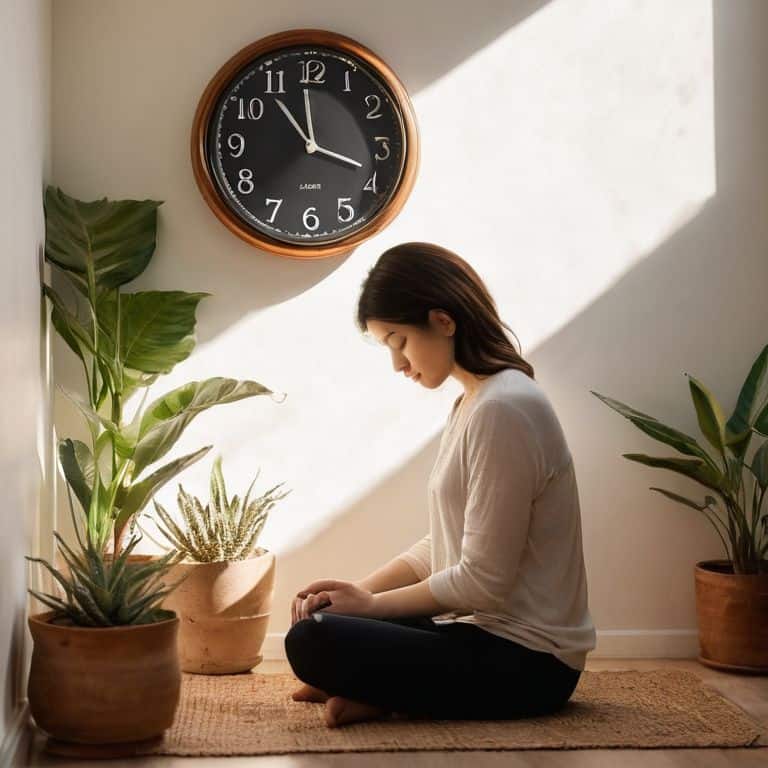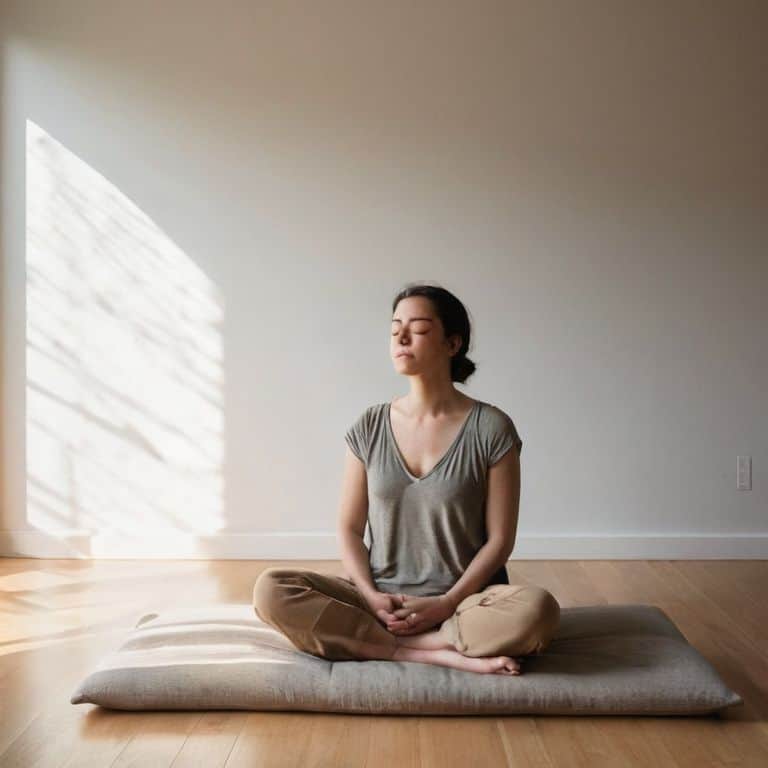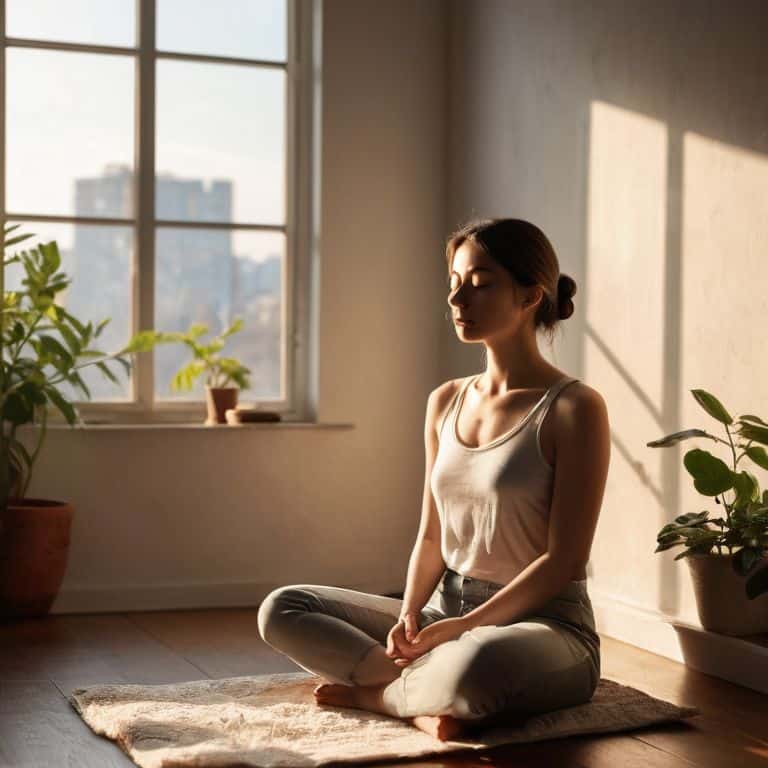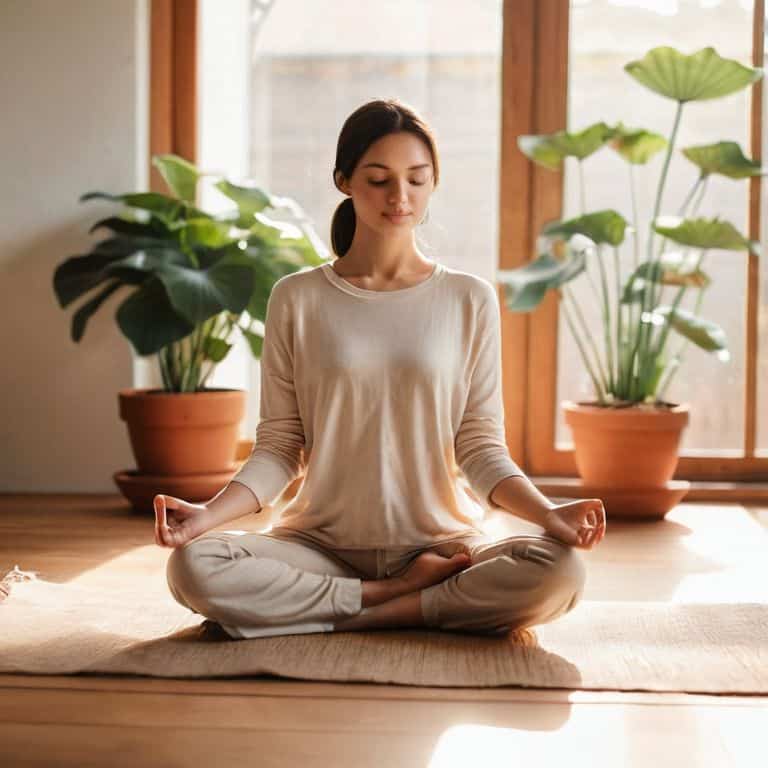I still remember the first time I tried to start meditating – I sat down, closed my eyes, and waited for some sort of profound inner peace to wash over me. But instead, my mind began to wander, and I found myself thinking about everything from my to-do list to what I was going to make for dinner. It was frustrating, to say the least. The common myth is that meditation is only for those who can clear their minds and sit in silence for hours, but I’ve learned that this couldn’t be further from the truth. If you’re looking to learn how to start meditating, you’re probably aware that it’s not always easy to get started.
As someone who’s been in your shoes, I want to assure you that meditation is accessible to anyone, regardless of their schedule or experience level. In this article, I’ll walk you through the simple, practical steps to get you started with meditation, from finding a quiet space to dealing with a wandering mind. You’ll learn how to create a consistent routine and make meditation a sustainable habit that brings calm and clarity to your daily life. By the end of this guide, you’ll have a clear understanding of how to start meditating and make it a meaningful part of your self-care practice.
Table of Contents
Guide Overview: What You'll Need

Total Time: 10 to 30 minutes per session
Estimated Cost: $0 – $20
Difficulty Level: Easy
Tools Required
- Comfortable cushion or chair for sitting
Supplies & Materials
- Guided meditation app or video optional
Step-by-Step Instructions
- 1. First, let’s start by setting aside a quiet space for meditation, free from distractions where you can sit comfortably without interruptions. This could be a corner in your bedroom, a spot in your backyard, or even a local park. The key is to find a place where you feel calm and can focus on your breath.
- 2. Next, choose a meditation technique that resonates with you, such as mindfulness meditation, which involves paying attention to the present moment, or loving-kindness meditation, which focuses on sending kindness to yourself and others. There are many resources available online that can guide you through different techniques, so feel free to explore until you find what works best for you.
- 3. Now, schedule your meditation sessions into your daily planner or calendar, treating them as non-negotiable appointments with yourself. Starting with just 5-10 minutes a day can be incredibly beneficial, and you can always increase the duration as you become more comfortable with the practice.
- 4. To begin your meditation session, sit comfortably with your back straight, either on a chair or on a cushion on the floor. You can close your eyes or keep them lightly closed, focusing on a point in front of you. The goal is to be comfortable and relaxed, so don’t worry too much about the specifics of your posture.
- 5. Start by taking a few deep breaths, inhaling through your nose and exhaling through your mouth. As you breathe in, feel the air fill your lungs, and as you breathe out, imagine any tension or stress leaving your body. This simple act of focusing on your breath can help calm your mind and prepare you for meditation.
- 6. Once you’ve settled into your breathing rhythm, you can start to focus on your chosen meditation technique. If you’re doing mindfulness meditation, for example, you might pay attention to the sensation of the breath moving in and out of your body, or the sensation of your feet touching the ground. Remember, the aim isn’t to achieve a specific state but to cultivate awareness and kindness towards yourself as you are in the present moment.
- 7. As you meditate, it’s common for your mind to wander, and that’s perfectly okay. The practice of meditation isn’t about stopping your thoughts completely but about gently acknowledging them and then letting them go, returning your focus to your breath or chosen meditation object. Be patient with yourself and remember that each time you bring your attention back is a success, no matter how many times your mind wanders.
- 8. When your scheduled meditation time comes to an end, take a moment to notice how you feel before slowly opening your eyes. Notice any changes in your body or mood, no matter how subtle. This reflection can help you appreciate the benefits of meditation and motivate you to continue your practice.
- 9. Finally, make meditation a habit by incorporating it into your daily routine, such as right after waking up or before bed. Consistency is key, and the more you meditate, the more you’ll find it becomes a natural part of your self-care routine, helping you navigate life’s challenges with greater ease and clarity.
How to Start Meditating

As you embark on your meditation journey, it’s essential to establish a consistent routine. Consider incorporating morning meditation routines into your daily schedule, allowing you to start your day with a clear and focused mind. This can be as simple as dedicating 5-10 minutes each morning to mindful breathing exercises, helping you cultivate a sense of calm and clarity.
To make the most of your meditation practice, it’s crucial to understand common overcoming meditation obstacles. One of the most significant challenges beginners face is difficulty quieting the mind. Remember that it’s normal for your mind to wander, and gently bringing your focus back to your breath is a natural part of the process. You can explore beginner meditation techniques, such as guided meditations or body scan exercises, to help you stay on track.
As you progress in your meditation practice, you may find that it becomes an invaluable tool for meditation for stress relief. By committing to regular practice, you can develop greater resilience to stress and anxiety, leading to a more balanced and peaceful life. Whether you’re interested in exploring introduction to transcendental meditation or simply looking for a way to reduce stress, the key is to find a approach that resonates with you and make it a consistent part of your self-care routine.
Beginner Meditation Techniques Simplified
To simplify your meditation practice, let’s focus on a few essential techniques. Start by practicing deep breathing exercises, where you inhale for a count of four, hold for a count of four, and exhale for a count of four. This helps calm your mind and sets the foundation for a peaceful meditation session. You can also try body scan meditation, where you focus on relaxing each part of your body, starting from your toes and moving up to the top of your head.
Remember, the goal is not to achieve a completely blank mind, but to gently acknowledge and let go of your thoughts. With regular practice, you’ll find that these techniques become second nature, allowing you to settle into a meditative state with ease.
Morning Meditation Routines for Clarity
To cultivate clarity, I recommend starting with a morning meditation routine. Begin by setting aside just 5-10 minutes each day, ideally before checking your phone or email. Find a quiet spot, sit comfortably, and close your eyes. Take a few deep breaths, feeling the air move in and out of your body. You can use a guided meditation app or simply focus on your breath, noticing when your mind wanders and gently bringing it back.
As you meditate, pay attention to your thoughts and feelings without judgment. Allow yourself to slowly wake up and become more present. This simple practice can help you approach your day with greater clarity and purpose. Remember, the goal isn’t to achieve a specific state, but to show up and be kind to yourself as you begin your day.
5 Essential Tips to Kickstart Your Meditation Journey
- Start small: Begin with just 5-10 minute meditation sessions to make it a sustainable habit
- Find your quiet spot: Identify a peaceful and comfortable spot in your home where you can meditate without distractions
- Focus on your breath: Bring your attention to your breath, noticing its texture, temperature, and movement, to calm your mind
- Be gentle with yourself: Remember that meditation is a practice, and it’s okay if your mind wanders – gently bring your focus back to your breath
- Make it a routine: Incorporate meditation into your daily routine, such as right after waking up or before bed, to make it a consistent part of your life
Key Takeaways to Begin Your Meditation Journey
I’ve found that starting small is key: begin with just 5-10 minute meditation sessions to ease into the practice and make it a sustainable part of your daily routine
Creating a peaceful environment is crucial – whether it’s a corner in your home or a quiet spot in nature, find a space that helps you feel calm and focused
Remember, meditation is a journey, not a destination: be patient with yourself, and don’t be afraid to try different techniques until you find what works best for you and your unique lifestyle
Finding Peace in the Present
Meditation isn’t about achieving a perfectly quiet mind, but about learning to gently guide your thoughts back to the present moment, where peace and clarity await.
Hannah Jensen
Embracing the Journey to Mindful Living

As we conclude our journey on how to start meditating, let’s recap the essential steps we’ve covered. We began with understanding the importance of meditation, then moved on to simple yet effective techniques for beginners, and explored how incorporating morning meditation routines can bring clarity to our daily lives. By following these steps and committing to a consistent practice, you’ll be well on your way to experiencing the numerous benefits meditation has to offer, from reduced stress to increased focus.
Remember, the key to a successful meditation practice is consistency and patience. Don’t be too hard on yourself if your mind wanders – simply acknowledge the thought and gently bring your focus back. As you continue on this path, you’ll find that mindfulness becomes a part of your daily life, enhancing your relationships, work, and overall well-being. Keep in mind that every small step counts, and with time, you’ll discover a deeper sense of calm and clarity that stays with you long after your meditation sessions end.
Frequently Asked Questions
How often should I meditate to see real benefits in my daily life?
To see real benefits, aim to meditate at least 3-4 times a week, starting with short 5-10 minute sessions. As you become more comfortable with the practice, you can gradually increase frequency and duration. Consistency is key, so find a rhythm that works for you and stick to it.
Can I meditate anywhere, or are there specific environments that are more conducive to mindfulness?
While you can meditate anywhere, peaceful spots like gardens or quiet rooms can help you focus. Even a few minutes on a busy bus or in a park can be beneficial, but finding a consistent, calm space can make it easier to establish a regular meditation practice.
How do I deal with a wandering mind during meditation, and are there any techniques to help me stay focused?
Don’t worry, a wandering mind is completely normal. When you notice your thoughts drifting, gently bring your focus back to your breath. Try the “anchor technique”: focus on the sensation of the air entering and leaving your nostrils, and when your mind wanders, softly say “ah” to yourself and return to your breath.
